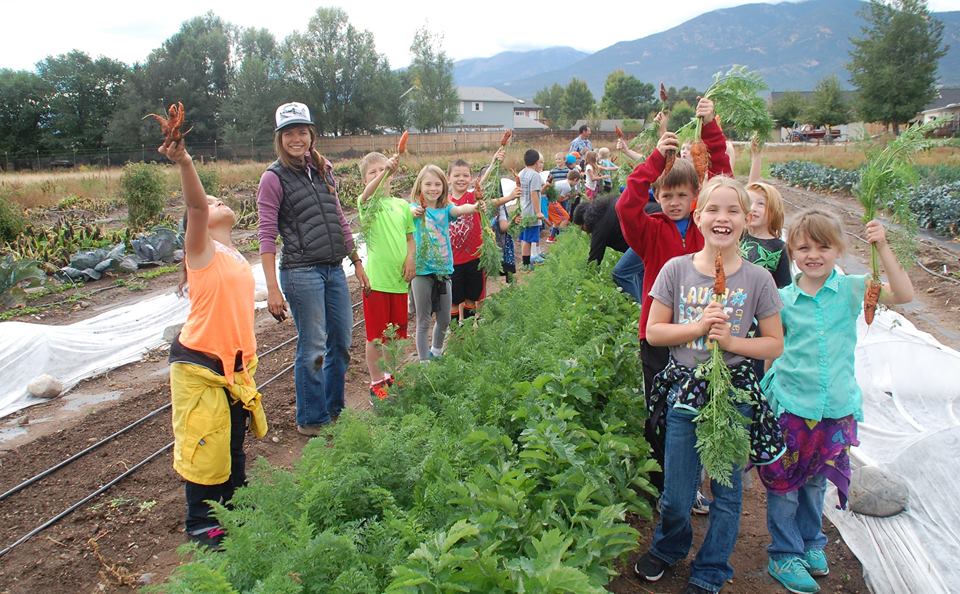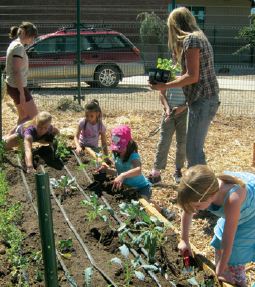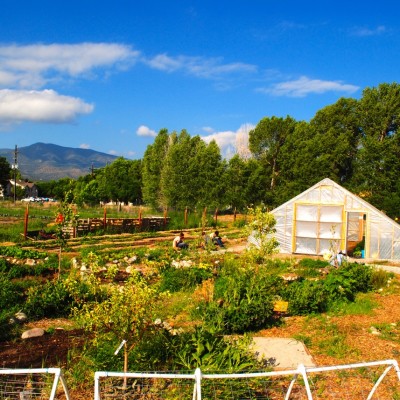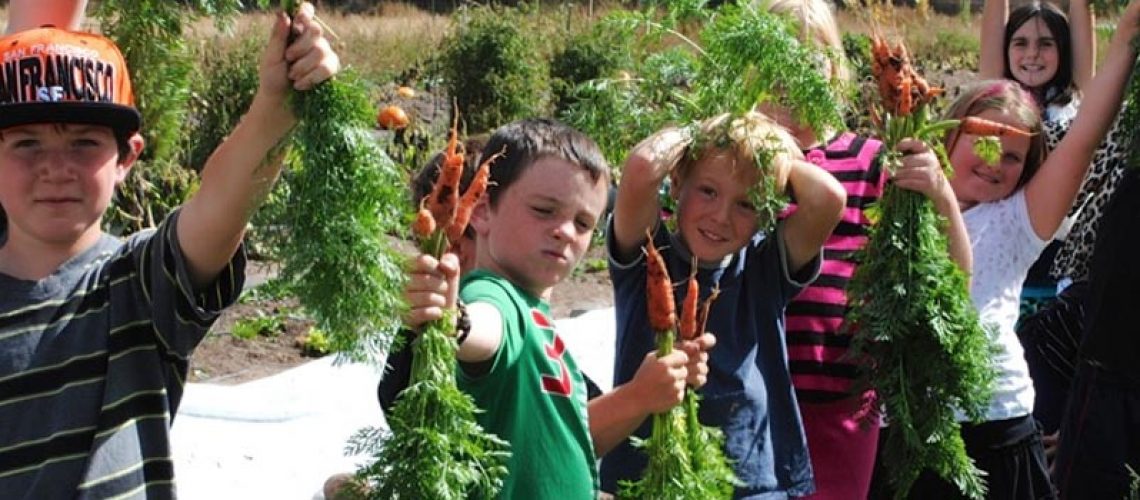The farm to school movement has been building momentum throughout the country, as schools and communities look for innovative ways to get kids eating healthier.
 One of our community coalitions, LiveWell Chaffee County, has gained increased recognition for building a highly successful farm to school program that can now be used as a model for others. A recent post on Health Affairs Blog notes, “These initiatives require
One of our community coalitions, LiveWell Chaffee County, has gained increased recognition for building a highly successful farm to school program that can now be used as a model for others. A recent post on Health Affairs Blog notes, “These initiatives require
sustained collaboration between policymakers, the business sector, and community stakeholders to support changes in food access and student dietary behavior. The farm to school efforts in Chaffee County provide an example of just such a successful collaboration.”
LiveWell Chaffee County Coordinator Lisa Malde echoes the importance of collaboration: “I would attribute the success of the program to the partnerships we’ve built,” she says, adding, “Without the support of the community—including parents, community organizations and businesses—we wouldn’t have a program that is so ingrained into the fabric of Salida.”
Fruitful Beginnings
In 2010, LiveWell Chaffee County began working with the Salida School District and local nonprofit Guidestone to develop the “Salida School Gardens: Healthy Food, Healthy Growing Garden to Cafeteria” program. By 2012, the alliance had raised enough financial and in-kind support for the startup costs of leasing and cultivating four acres of land and had recruited a team of volunteers dedicated to maintaining the farm’s infrastructure and tending to crops.
Growing Pains
 Growing produce in a cool and dry mountain climate was an initial challenge, but the coalition also had to figure out how to integrate the fresh produce into schools. Buoyed by community support and a new superintendent dedicated to improving school meals, LiveWell Chaffee County and its partners got to work on reforming the district’s food policies. In short order, the collaboration successfully revised the school wellness policy to include stronger language about healthy eating and the board adopted policies requiring school meals and vending machines to meet minimum nutritional standards.
Growing produce in a cool and dry mountain climate was an initial challenge, but the coalition also had to figure out how to integrate the fresh produce into schools. Buoyed by community support and a new superintendent dedicated to improving school meals, LiveWell Chaffee County and its partners got to work on reforming the district’s food policies. In short order, the collaboration successfully revised the school wellness policy to include stronger language about healthy eating and the board adopted policies requiring school meals and vending machines to meet minimum nutritional standards.
School food service staff also had to be trained in scratch cooking so they could incorporate the produce from the garden into school meals. In the past, processed foods were the norm because they could simply be heated and served directly to students. Led by the district’s food service director, who is also a former executive chef, kitchen staff learned how to wash and prepare the produce to create nutritious and delicious meals that students want to eat.
Plowing Ahead
 Today, LiveWell Chaffee County and its partners have developed a quarter of the total land leased—including an orchard, raised and in-ground vegetable beds and a special “hoop” greenhouse that extends the growing season in the alpine town. In just its first few years of operation, the program has contributed more than 3,000 pounds of food to Salida schools, leading to a 12 percent increase in the amount of fruits and vegetables consumed by Chaffee County youth. At the beginning of the 2015 school year, organizers had already signed another three-year lease and were in talks to expand the farm.
Today, LiveWell Chaffee County and its partners have developed a quarter of the total land leased—including an orchard, raised and in-ground vegetable beds and a special “hoop” greenhouse that extends the growing season in the alpine town. In just its first few years of operation, the program has contributed more than 3,000 pounds of food to Salida schools, leading to a 12 percent increase in the amount of fruits and vegetables consumed by Chaffee County youth. At the beginning of the 2015 school year, organizers had already signed another three-year lease and were in talks to expand the farm.
Perhaps the greatest measure of impact is that the program now serves as a model for food production and integration into schools that can be replicated and shared with other rural communities throughout the state. “We really have an amazing team that has brought forward everything we needed to make this project a success,” Malde says, adding happily, “At this point, there’s no going back!”

